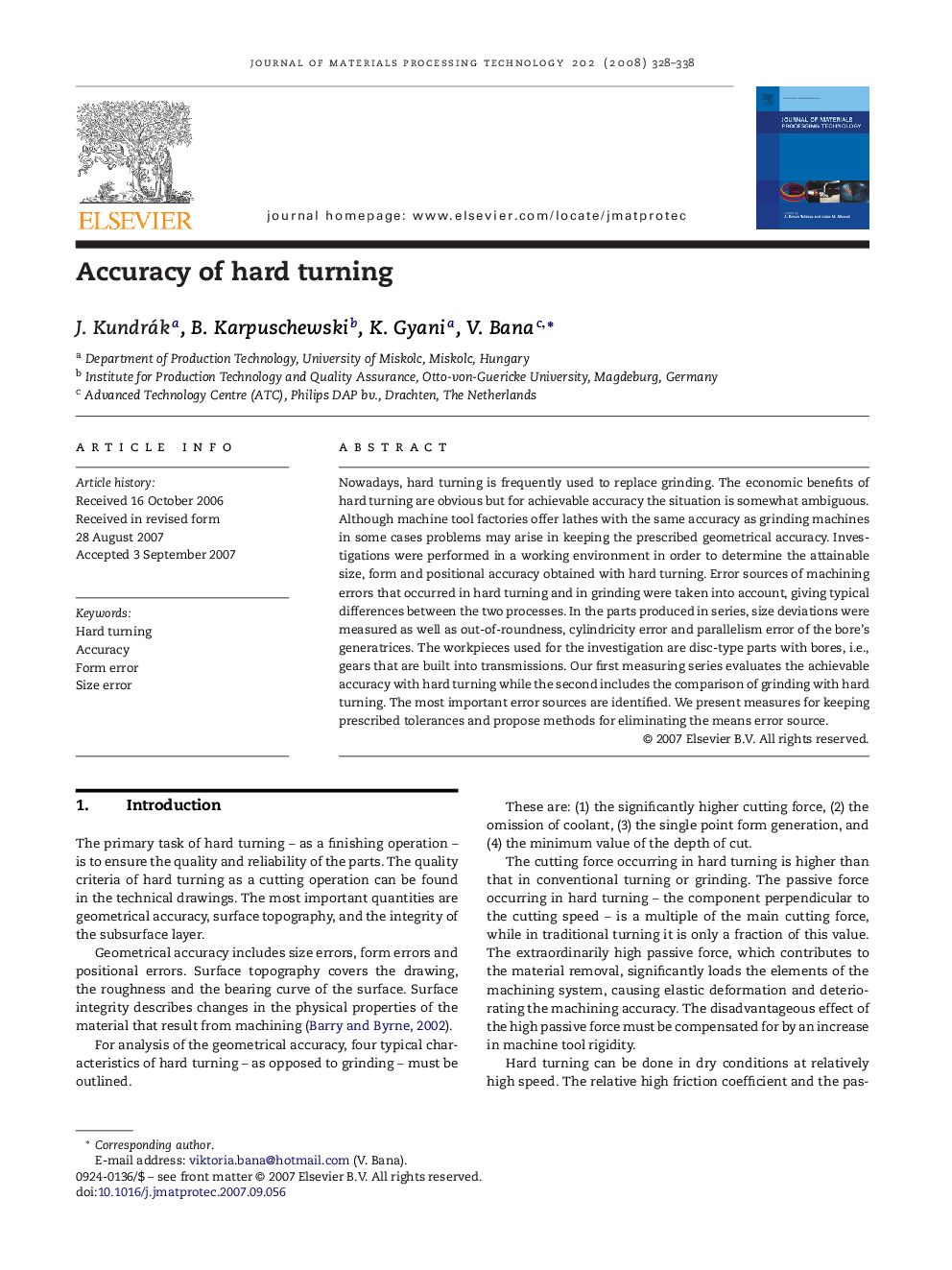| Article ID | Journal | Published Year | Pages | File Type |
|---|---|---|---|---|
| 795446 | Journal of Materials Processing Technology | 2008 | 11 Pages |
Nowadays, hard turning is frequently used to replace grinding. The economic benefits of hard turning are obvious but for achievable accuracy the situation is somewhat ambiguous. Although machine tool factories offer lathes with the same accuracy as grinding machines in some cases problems may arise in keeping the prescribed geometrical accuracy. Investigations were performed in a working environment in order to determine the attainable size, form and positional accuracy obtained with hard turning. Error sources of machining errors that occurred in hard turning and in grinding were taken into account, giving typical differences between the two processes. In the parts produced in series, size deviations were measured as well as out-of-roundness, cylindricity error and parallelism error of the bore's generatrices. The workpieces used for the investigation are disc-type parts with bores, i.e., gears that are built into transmissions. Our first measuring series evaluates the achievable accuracy with hard turning while the second includes the comparison of grinding with hard turning. The most important error sources are identified. We present measures for keeping prescribed tolerances and propose methods for eliminating the means error source.
